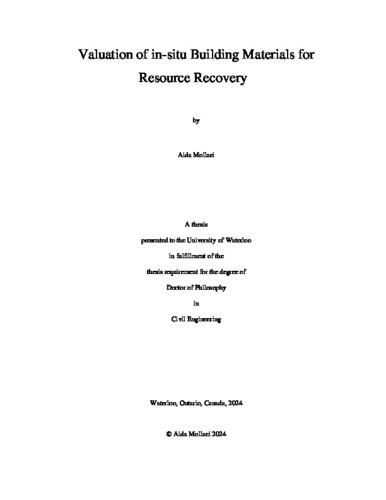| dc.description.abstract | The construction industry is among the largest contributors to global raw material consumption and
is responsible for 40% of annual greenhouse gas emissions. Recovery of building materials at the end
of a building's life, often seen as a common circular approach, can help mitigate the environmental
impacts within this sector. However, the feasibility of recovering in-situ building materials is dependent
on various technical, operational, financial, environmental, and regulatory factors, making the
implementation of resource recovery complex and challenging. The main objective of this research is
to develop methodologies that improve the recovery of building materials at end-of-life through
assessment of the value of in-situ building materials. At the core of this research, a decision support
tool is developed that incorporates the main factors that impact the value of materials embedded in
buildings. The tool is designed based on a multi-objective optimization model that estimates optimal
end-of-life options for building components. Throughout this research, the tool is applied to various
case studies and analyzed through sensitivity analyses. Using the developed tool, a novel methodology
is proposed to assess the efficacy of policies focused on deconstruction and building recovery.
Following that, the impact of regional factors such as labour costs, material markets, and socioeconomic
factors, are assessed on building end-of-life strategies. The findings underscore the necessity of tailored
policies and regulations to effectively reduce waste generation within specific regional contexts.
Finally, expanding the applicability of the developed tool on future building stocks, a methodology
aimed at evaluating circular design and construction strategies on the recovery potential of buildings is
provided. This thesis contributes to the development of optimized material recovery processes that
result in waste reduction and carbon emission mitigation. Realizing the recovery potential of building
materials is a pivotal step towards fostering a more circular construction sector. | en |

